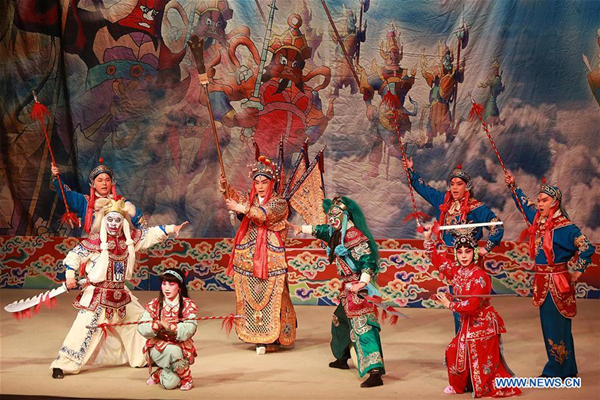Peking opera


Chinese actors perform during the Peking Opera named "The Monkey King Making Havoc in Heaven" inside the Cultural Center of the Philippines in Pasay City, the Philippines, on May 19, 2018. The theater play is organized by the National Commission for Culture and the Arts and the Cultural Center of the Philippines, in cooperation with China's Ministry of Culture and Tourism and Chinese Embassy in the Philippines. [Photo/Xinhua]
Peking opera, once known as Pingju, is one of the five major Chinese operas. It is a performance art combining music, vocal performance, mime and acrobatics.
The music of Peking opera can be divided into the "xīpí" and "èrhuáng" styles. Melodies include arias, fixed-tune melodies and percussion patterns. And the roles on the Peking Opera stage fall into four major roles -- Sheng, Dan, Jing and Chou.
Anui opera was the predecessor of Peking Opera. In 1790, the "Four Great Anhui Troupes" brought Anhui opera to Beijing for the eightieth birthday of the Qianlong emperor. In 1828, Anhui troupes performed jointly with several famous Hubei troupes that had already arrived in Beijing. The combination gradually formed Peking Opera's melodies. After that, Peking Opera began to develop rapidly and achieved unprecedented prosperity.
Peking Opera has spread all over the world and become a widely recognized element of China's cultural heritage. On November 16, 2010, it was granted world intangible culture heritage status.




